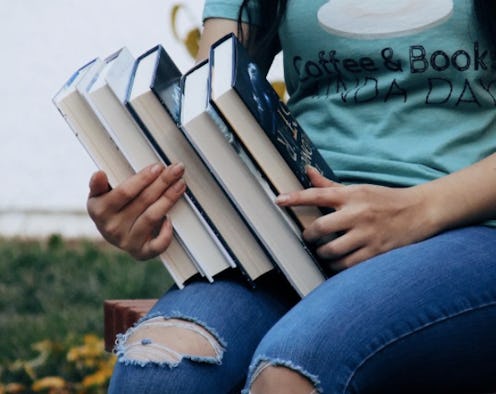Books
My 2017 Resolution Is To Read More Diverse Books
I still remember the first time I was really introduced to diverse books in a systematic, purposeful way. I was in seventh grade, and my English teacher was Ms. Facey, a black woman who wore her long hair in braids and used her hands a lot. She was the first English teacher I’d ever had who wasn’t white. Her syllabus offered a lot of fantastic reads, and introduced me to one of my favorite books — Miracle’s Boys by Jacqueline Woodson.
I’ve been in love with books for as long as I can remember, even though I struggled to learn to read at first because of a learning disability. Instinctively, I sought out books that challenged the homogenous classic curriculum — because I’m queer/trans and disabled, and I grew up in a very multicultural, non-Christian neighborhood, and the books I was usually told to read for school just didn’t reflect my world.
I didn’t spend any real time thinking about the state of diversity in publishing until I was a college student. By then, I’d spent my teens and twenties as a queer, disabled reader: in other words, heavily disappointed. I also knew that I wanted to work in the publishing industry, and that, according to employment stats, the industry didn’t have room for someone like me. I wanted to change that.
As both a feminist and a publishing professional, it’s key that my reading list actively challenges me — that it makes me acknowledge my own privilege, that it makes me aware of systemic oppression that doesn't personally affect me, that it challenges my biases and assumptions. As a reader, I know how powerful books can be as a tool for empathy. Monster by Walter Dean Myers and From the Notebooks of Melanin Sun by Jacqueline Woodson both proved that to me, because I never expected to be able to connect to the plots or the protagonists.
The first book I tackled for my resolution was The Sun is Also a Star by Nicola Yoon, a book that shone in the spotlight as a National Book Award finalist in 2016. On the surface, it looks like a book about characters I could never personally relate to — Daniel, a Korean American teen pre-destined for medical school by his parents, and Natasha, an undocumented Jamaican immigrant whose family is soon-to-be deported. Instead, I found myself falling in love with both characters and finding myself in their smallest moments.
This year, I also plan to read When the Moon Was Ours by Anna-Marie McLemore, The Absolutely True Diary of a Part-Time Indian by Sherman Alexie, Shadowshaper by Daniel Jose Older; Flying Lessons & Other Stories edited by Ellen Oh, The Hate U Give by Angie Thomas, Labyrinth Lost by Zoraida Cordova, Juliet Takes a Breath by Gabby Rivera, Mean Little Deaf Queer by Terry Galloway, When Dimple Met Rishi by Sandhya Menon, It’s Not Like It’s a Secret by Misa Sugiura, In Order to Live by Yeonmi Park, A Quiet Kind of Thunder by Sara Barnard, and probably many more.
Being proactive about my quest to read diverse books isn’t just about what’s hot this moment. Diversity in publishing has become sort of a buzzworthy term in the last few years, as mainstream movements pick up on the work of longstanding supporters of diversity like independent publisher Lee & Low. I think the rise of discussions has come at exactly the right time. We need these kinds of systemic changes in the industry, and as someone whose career goal is to increase intersectional, authentic marginalized representation in publishing, I’m committed to doing my part to make sure it happens. That starts with a daily decision to read diversely, with purpose.
As a reader and a publishing professional, it’s important to me to stand behind the call for more diversity in publishing. I don’t remember the first time I read a book with a marginalized character or by a marginalized author, but I do remember the first time I read a book about a queer/trans or disabled character that got it so terribly wrong. I do remember the first time a book let me see into a world of experiences that I’ve never personally had, and made a profound impact on my worldview. I do remember the first time a book made me question my privilege, made me see the ways that other marginalized people are oppressed, and gave me the language to say something about what was happening in the world. I do remember the first time I handed a friend a book and said, “This will show you a little bit about what it’s like to be me,” and they read it and finally understood.
We make choices every day. This year, one of my choices is to be critical about what I’m reading — not only to be thoughtful of the representation of marginalized characters in books, but to actively seek these books out. And to actively seek out marginalized and #OwnVoices authors, and to publicly show my support of diverse books by telling my friends and writing about what I’ve read and loved. It’s a small step, but I hope that if more of us take it, it’ll transform into an even bigger collective change.
